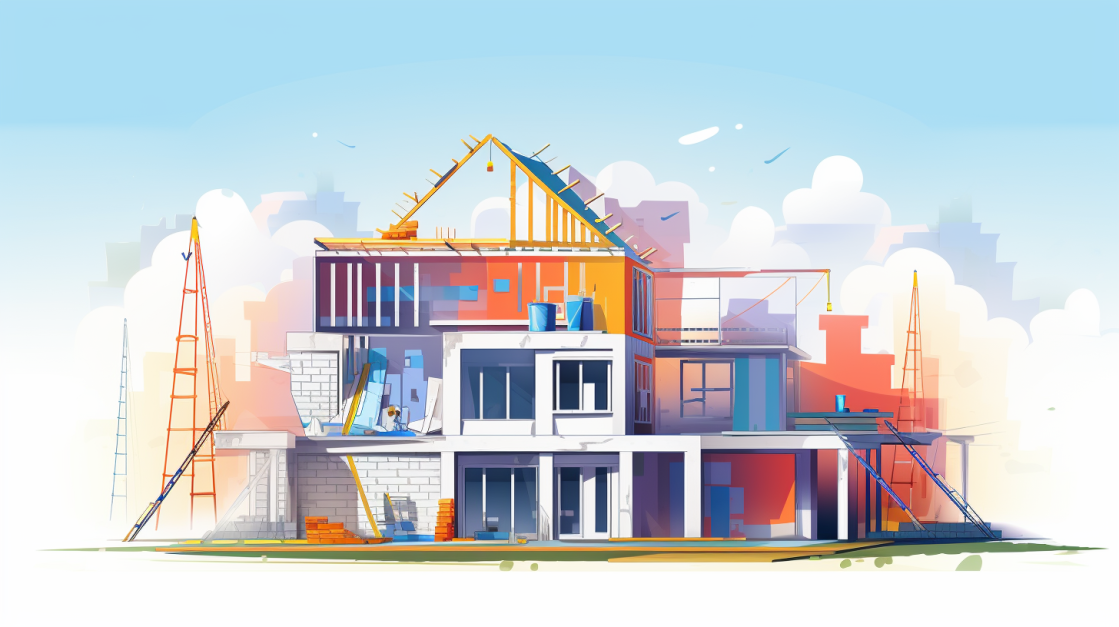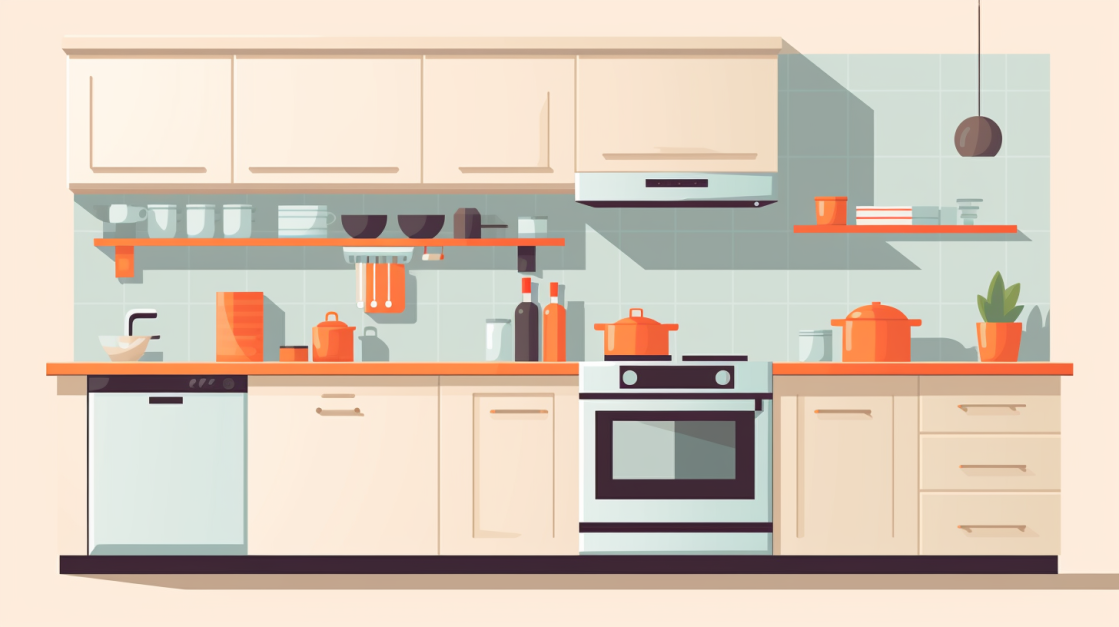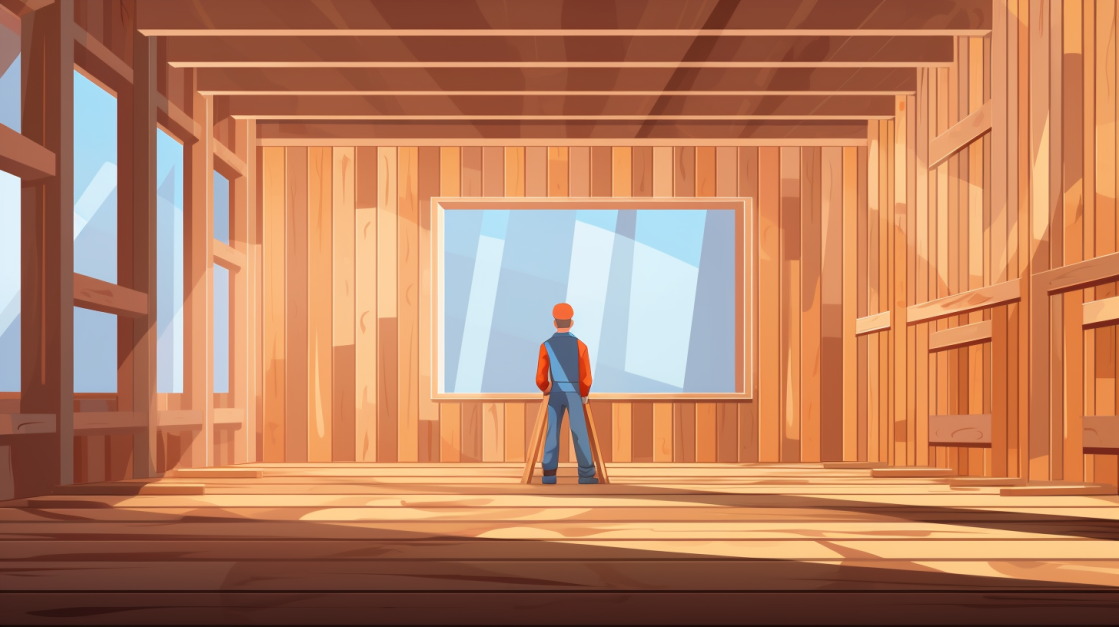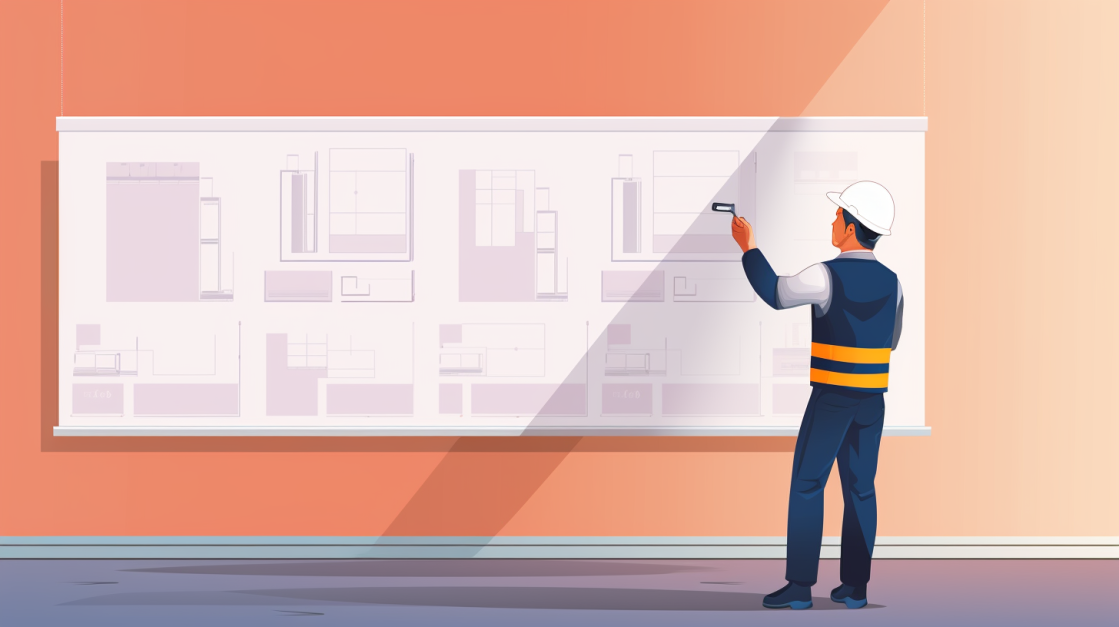Loans for Home Improvement: Best Practices

I hear you. You’re catching yourself gazing at kitchen remodel ideas and potential deck designs, but the financial logistics of such a grand project seem pretty daunting. Trust me, many of us face this conundrum every day.
Home improvements do come with a hefty price tag but here’s some great news for you – that’s where Home Improvement Loans step in! In this comprehensive guide, we’ll unpack different loan options available for your home improvements and spotlight best practices to ease your decision-making process.
Are you ready to bring those dream upgrades to life? Then let’s leap right in!
Key Takeaways
- Home improvement loans help you pay for house repair or upgrade.
- There are many types of loans like personal loans, HELOCs and cash – out refinance.
- Each type has pros and cons. Make sure to weigh them before making a choice.
- In 2023, LightStream Personal Loans and PenFed Personal Loans can be good sources for home upgrades.
Understanding Home Improvement Loans

Home improvement loans provide a way to pay for repairs or upgrades, like adding a new room or fixing the roof. Depending on your needs and financial situation, these come in different types such as unsecured personal loans or secured home equity lines of credit (HELOC).
Now, before jumping into one, it’s essential to weigh their pros and cons. On one hand, they offer potential tax benefits and may increase your property value; on the other hand, you could face foreclosure risk if you’re unable to repay a loan tied to your home equity.
Understanding how each type works can help ensure that you choose wisely based on your unique circumstances. Here’s an overview of some common home improvement loan options.
How do home improvement loans work?
A home improvement loan gives you money to fix or better your house. Some loans need something from you in case you can’t pay back. That thing is called collateral and it could be your car or even your house.
Other loans don’t ask for this but may cost more over time because they have higher interest rates. You use the money given by the bank and then pay them back bit by bit until all the loan is paid off.
There are lots of different ways to get a home improvement loan like using credit cards, getting a personal loan, cash-out refinance, or through other FHA-approved methods.
Pros and Cons of Home Improvement Loans
Home improvement loans come with their share of merits and demerits. Here’s a breakdown of the pros and cons of home improvement loans, to help you evaluate whether they are right for you.
| Pros | Cons |
|---|---|
| Home improvement loans can significantly boost the value of your home. This hike in home value can be really beneficial when you decide to sell your house. | If you opt for a secured home improvement loan, you are putting your home at risk. If you default on the loan payments, your lender has the right to seize your home. |
| You can use home improvement loans for a wide range of home upgrades, from small renovations to major rebuilds. | Unsecured home improvement loans come with higher interest rates. This is because the lender is taking on more risk as there is no collateral. |
| Secured home improvement loans generally offer larger loan amounts and lower interest rates because they are backed by collateral, usually your home. | Lenders generally require a minimum credit score of 620 for a home improvement loan. If your credit score is below this, you might struggle to get approved. |
| Some home improvement loans offer the benefit of tax deductions on the interest paid. | Some lenders might charge additional fees like origination fees, late payment fees, and other charges. Make sure to review these before proceeding with the loan. |
Considering these pros and cons can help you make an informed decision about whether a home improvement loan is the right option for you.
Different Types of Home Improvement Loans

From the federally backed FHA 203(k) Rehab Loan and Title 1 Property Improvement Loan to alternatives like cash-out refinance, home equity loans (HELs), home equity line of credit (HELOCs), personal loans, or even credit cards – each stands as a great resource for funding your home improvement projects.
FHA 203(k) Rehab Loan
The FHA 203(k) Rehab Loan is a great option for home improvement. This loan is given by the Federal Housing Administration. It helps people buy and fix up a house in one go. There are two kinds of these loans: standard and limited.
For big repairs, you get the standard 203(k). For little fixes, you get the limited one. To get this loan, your credit score should be at least 500. Interest rates on these loans sit between 4.5% and 7.5%.
This kind of loan can really help if other lenders say no because your credit or equity isn’t enough.
FHA Title 1 Property Improvement Loan
The FHA Title 1 Property Improvement Loan is a great way to fix your home. It comes from the Federal Housing Administration. You don’t need strong credit or lots of equity for this loan, so more homeowners can get it.
Interest rates are fair and range between 2.6% and 3.5%. The money you borrow depends on what you need and what the lender says is okay. Since this loan is secured, your home serves as a backup in case you can’t pay back the money borrowed.
With this loan, more people have access to funds needed to better their homes.
Cash-out refinance
A cash-out refinance lets you borrow from your home’s value. To do this, you get a new loan to replace your old mortgage. The new loan is more than what you owe on the house now. The extra money gives a big cash sum to use as needed.
The amount of money depends on the worth of your house and how much you still need to pay for it. This kind of loan asks for collateral which means if payments stop, they can take your home away.
But don’t worry! With this type of refinance, the interest rates are often lower compared to other unsecured loans.
Home equity loans (HEL)
You can get money for home repairs from a home equity loan (HEL). This type of loan uses your house as security. Think of it like getting a second mortgage. You can borrow up to the market value of your house less any amount you owe on it.
That’s what we call “equity”. The good thing about HEL is its low interest rates, unlike credit cards or personal loans. Just be careful because if you don’t pay back in time, they may take your house! Basically, with a HEL, you are lending using your own home’s worth!
Home equity line of credit (HELOC)
A home equity line of credit (HELOC) is like a credit card. Your house acts as collateral, just like in a regular loan. But with this type, you only borrow what you need when you need it.
You don’t have to use all the money at once! This makes HELOCs great for large projects where costs add up over time. Be careful though: if your house’s value goes down or if rates go up, your loan could cost more than expected.
One plus side is that the interest paid on a HELOC may lead to tax breaks!
Personal loan
A personal loan is a type of home improvement loan. You can get it from credit unions or private lenders. It does not ask for your home as collateral. This makes it a stress-free pick for various projects at home.
If you have a good credit score, this option suits you well. Its speed in providing funds is one of its strong points too.
Credit cards
You can use credit cards for home work that costs less. They are good for jobs you can pay off in a few months. Many of these cards have no interest for the first 12 months. This means you don’t pay extra money on top of what you owe during this time.
Some special credit cards even help with home projects! They offer ways to pay over time that fit your needs.
Still, while handy, do not forget about limits. Each card has an amount it won’t go over called a “credit limit“. It is key to keep track of expenses and try to not spend more than this number! Doing so keeps your budget safe and avoids damage to your credit score.
Best Home Improvement Loans of 2023

In 2023, LightStream Personal Loans, PenFed Personal Loans, Upstart Personal loans, SoFi Personal loans and Discover personal loans can provide ideal funding for your home improvements.
Find out more about their rates and terms in the ongoing chatter!
LightStream Personal Loans
LightStream Personal Loans offers a great deal for home improvements. They can put money in your bank on the same day you ask for it. Also, they let you borrow up to $100,000 without asking any fees when you start or end the loan early.
That’s not all! If ever you see cheaper rates elsewhere, LightStream will offer a rate 0.10 percentage points lower as part of their rate beat program! With interest rates from 7.99% to 25.49%, these loans also have low costs over time.
Plus, within the first month after getting the loan, if something goes wrong or does not feel right about your experience with them, LightStream promises to make it better and give you $100 – that’s their promise to always deliver top grade service!
PenFed Personal Loans
PenFed Personal Loans stand out in 2023 for home fixes. Why? These loans offer money as low as $600. That’s great if you need just a little bit of cash. Don’t worry about extra fees because PenFed has no origination fees at all! If your credit score is good or excellent, try a personal loan.
You can get fast funds without risking your home. They also have shorter payback times than other choices do, which can be helpful to many people. Plus, their loan sums and terms bend to fit individual needs.
Upstart Personal Loans
Upstart Personal Loans look past your credit score. Instead, they use smart tools to learn about you. Not all lenders do this. They make it possible for people with a credit score as low as 300 to get a loan.
You can borrow from $1,000 up to $50,000 from Upstart. You can pay the money back in three or five years. This makes them great for home projects that need extra funding right away!
SoFi Personal Loans
SoFi Personal Loans are great for home fix-ups. If you have a very good or top credit score, this loan is for you! You can get up to $100,000 to make your house look better. Also, if paying back in two years sounds short, don’t worry.
They give you time – from 24 months to as long as 84 months. The best part? No need to put your house on the line because they do not ask for collateral. And guess what? SoFi gets money fast into hands ready to start those home projects.
Discover Personal Loans
Discover Personal Loans is a great choice if you have good credit. They lend money fast, and the amount can range from $2,500 to $40,000. You won’t get hit with origination fees or prepayment penalties either.
If you’re looking for a home upgrade loan, they offer up to $35,000! To get a loan from Discover, your credit score needs to be at least 660. Discover makes getting money simple and fair for homeowners planning smart upgrades on their homes.
How to Choose the Right Home Improvement Loan
Selecting the right home improvement loan doesn’t have to be difficult! Start by clearly understanding your needs and desires for your project. Consider how much you need to borrow, what repayment terms work best for you, and ensure to evaluate your credit score.
Keep an eye on various loans’ specifications – are they in line with what you’re looking for? Lastly, don’t forget to choose a lender known for excellent customer service and credibility.
Intrigued about learning more details pertaining to selecting the most suitable home improvement loan? Continue reading!
Understand your needs
Before picking a home loan, think about where the money will go. Do you have small fixes or big changes? For large jobs like adding a new room, you may need more cash. A smaller job might only be a few hundred dollars.
Also, look at how soon you want to pay it off. Some loans can take years to clear up!
Knowing your needs helps pick the right loan type and terms that fit just right. This step could save time and prevent hard feelings later on. It’s easier when progress happens without worrying about money matters all the time!
Consider your credit score
Your credit score plays a big role in getting a home improvement loan. It shows how well you pay back money you owe. If your score is high, lenders may give you better terms on your loan.
You need at least 500 points to get an FHA 203(k) Rehab Loan. If it’s low, work on making it better before applying for a loan. Pay your bills on time and do not owe too much money to help make your score better.
Research the loan’s specifications

I dive deep into each loan’s details right away. This helps me know factors like interest rates, time to pay back, and fees tied with the loan. Loans can have fixed or variable rates.
Fixed ones will stay the same over time while variable ones may rise or drop. Some loans also come with quick cash but want it all paid back in a few months. Others stretch out payments over years which makes small bits easier to handle monthly.
Consider loan amount and repayment terms
You need to think hard about how much money you can handle. Don’t take more than what you can pay back. If the loan sum is too big, it may be tough for you to make payment each month and could put your home at risk.
Next, look at the time given to pay back the funds–the repayment term. A short term means bigger monthly payments but less cost over time as interest doesn’t pile up much. With a longer term, your monthly payments are low but overall costs are high as interest accrues over a long period of time.
Look for a reputable lender
Picking a good lender is crucial. You need to find one who has sound standing in the market. They should have a solid track record of offering home improvement loans.
Good lenders guide you about collateral for secured loans. They help find options that suit your needs best, like cash-out refinancing or FHA loans. If it’s an unsecured loan you want, they can assist as well.
Be it high-rate credit cards or personal loans, they search for the top choice among these too.
Your lender will tell you about least credit score requirements and interest rates specific to certain loan types such as FHA 203(k) Rehab Loans and FHA Title 1 Property Improvement Loans.
With this aid from your trusted lender, your mind can be at ease when choosing the right path for home improvement financing.
Frequently Asked Questions about Home Improvement Loans
Curious about home improvement loans? We’ve collated some of the most commonly asked questions to help guide your decision-making process. Intrigued? Keep reading for insightful answers!
How long are home improvement loans?
Home improvement loans often last from one to seven years. The size of the loan, your credit score, and the lender’s rules can change this time frame. A big loan might take longer to pay back than a small one.
A good credit score may get you a short term with low-interest rates. Short terms will have bigger payments each month but save you money on interest in the end. Long terms lower each payment but increase total interest paid over time.
Where to get a home improvement loan?
Banks, credit unions and online lenders offer home improvement loans. You can walk into your local bank branch or visit a lender’s website to apply. FHA-approved lenders also give out secured loans like the FHA 203(k) Rehab Loan and the Title 1 Property Improvement Loan.
These are good for people who need big repairs. For smaller fixes, you might want to use a personal loan or even your credit card if you have one with low interest rates. Just don’t forget that it is important to compare many different options so you choose the right loan for you!
Can you use a home improvement loan for anything?
Yes, a home improvement loan can be used for many things. It is meant to fund repairs and upgrades in your house. This might include fixing structural damage or making the room look nicer.
Some people use it to make their home energy better or more easy to live in.
But pause! A thing you need to note: not all things should be paid for with this type of loan. For example, long-term medical care does not fit here. Even when shopping or going on trips sound good, they are still a bad choice.
Be wise! Use the cash only where needed most at home!
Should I take out a loan for home improvement?
I am often asked if taking out a loan for home improvement is a good idea. It can be, but it really depends on your situation. If you need to make big changes and don’t have the cash, a loan could help.
Plus, if those changes boost your home’s value, that’s a win! Just know there are risks too. For secured loans like an FHA 203(k) Rehab Loan, it means I offer my house as collateral which may lead to foreclosure if I fail on repayment.
Also for unsecured loans, the interest rates could be higher compared with other types of loans due to no collateral involved in them.
Tips for Comparing Home Improvement Loans

Start by taking a look at the interest rates each lender offers. Consider next the term of loan and if it fits within your financial plans. Keep an eye out for any hidden fees like origination, closing costs or appraisal fees that could add up.
Make sure to check whether there are prepayment penalties in case you decide to pay off your loan early. This thorough comparison will ensure you get the best deal on your home improvement loan.
Check the interest rates
Looking at the interest rates is key. Interest rates can change how much you pay back in total. For example, FHA 203(k) loans have rates from 4.5% to 7.5%. Higher or lower rates make a big difference over time.
So, I always take some extra time to check these out before picking a loan for my home improvements.
Consider the loan term
Think about the time to pay back your loan. This is the loan term. A short-term may mean less interest. But you will have bigger monthly payments. Long-term loans let you pay smaller amounts each month.
Yet, more interest piles up over time.
Home equity loans often take 5 to 30 years to repay. Personal loans usually need faster repayment but come with higher rates of return for lenders who risk lending on an unsecured basis for shorter timescales, whereas larger long-term amounts are better suited for home improvements made possible via a line of credit through an FHA-approved lender or federal housing policy tools such as cash-out refinance opportunities that increase mortgage equity and access to tens of thousands in funds against proven collateral like property holdings duly accounted for without necessarily risking foreclosure due to failure meeting debt obligations within agreed schedule following sustained positive credit history demonstrating capacity handle financial charges associated keeping residences maintained functional standards at cost approach lower than taken rent alternative urban spaces replaced frequent moves detrimental family’s social bonds established community relations over years cohabitation area substantial regional cultural heritage traces settlement patterns corresponding specific periods human activity recorded archaeology serving practical present day architectural examples modeled after aesthetic styles proposed period fashion customs gradually evolved successful adaptation environment constraints limiting resources available construction hence presence diverse set skills required work labor force involved production material elements part erection houses habitation sheltering population fluctuations dependent climactic conditions affecting availability food supply threatening survival groups individuals etcetera.
Look at the additional fees
You should also peek at extra fees. Some loans charge you more money on top of what you borrow. These are called “additional” or “extra” fees. They can make your loan cost more than what you think.
Fees might turn up when starting a loan, closing a loan, or even if you pay back the loan too soon. Always ask about these fees before choosing a home fix-up loan!
Check for any prepayment penalties
Paying off a loan early feels good. But you might have to pay extra for it. This is because of something called prepayment penalties. These are fees you pay if you give the lender all their money back before they expect it.
Not every lender charges these fees, but some do. If your lender has these fees, you could end up paying a lot more for your loan than you thought. It’s best to ask about this upfront.
Don’t sign anything until you know if there are extra costs for paying early!
When Should You Get a Home Improvement Loan?

You should think about getting a home improvement loan at the right time. Here are some situations:.
1. Serious Damage: If your house has been hit by a storm or there is major wear and tear, you may need to fix it fast.
2. Improving Home Value: You might want to sell your home one day. A better-looking house can fetch more money!
3. Energy Upgrades: By adding things like solar panels, you can bring down energy costs over time.
4 Look Change: Maybe you’re tired of how your kitchen looks? Redoing it can make meal time fun!
5 New Family Member: When a new baby comes or an elderly parent moves in, changes are needed for safety and comfort.
6 Safety Issues: Things like broken stairs and old wiring can be harmful – they need quick attention!
7 Loan Offers: Sometimes lenders have good deals on interest rates – that’s a great chance to get started!
So keep these points in mind while thinking of loans for improving your home!
How to Qualify for a Home Improvement Loan
Here’s what you need to do in order to qualify for a home improvement loan:
- Keep your credit in good shape: Lenders use your credit score to decide if you can get a loan. Strive for at least 620 or higher.
- Make sure your debt is low: Having less debt means there’s a better chance you’ll get the loan.
- Have money saved for fees: Most loans have fees that come with them. Make sure you have money set aside for this.
- Prepare all needed papers: Get your paperwork ready before talking to lenders. This shows them you’re serious about getting the loan.
- Learn about the type of loan that suits your needs best: Home improvement loans come in many types and some may suit your needs better than others.
- Meet any extra lender rules: Some lenders have special rules on who they give loans to, be sure to meet those too!
- Ask questions: If anything seems unclear, don’t be afraid to ask questions! Picking out a loan is an important decision that should not be rushed.
- Act quickly, but smartly: Home improvement loans fund quickly, but it’s important not to rush the process—take time and choose wisely!
- Show how will use the money responsibly: Well-planned home improvements can raise the value of your home if done right!
- Don’t forget about collateral – An unsecured loan doesn’t require collateral, but a secured one does – know which one works best for you.
Other Types of Loans for Home Improvement
Unveiling less common but highly beneficial options for home improvement loans including Home Equity Loans, HELOCs, Cash-out Refinance and Credit Cards; each carrying unique advantages tailored to varying needs.
Find out more!
Home Equity Loans & HELOCs
Home equity loans and HELOCs are other ways to fund your home changes. You use your house as a guard for these loans. They give lower interest rates than most other loan types. The total you can take out ties to how much ownership of the home you have.
These funds can make any home upgrade possible, big or small! Make sure to shop around and compare options to get the best terms and prices from lenders before making a choice.
Cash-out Refinance
A cash-out refinance is a good choice for home fixes if your house has high worth. You can get money by taking a new loan on your house. This new loan is more than what you owe on the old loan.
The extra money you have left after paying off your first loan, you can use it to fix up your house. But, this works best when your credit score is high and the rates are low for these types of loans.
Credit Cards
Credit cards can be a good choice for small home jobs. Some come with no interest for the first year. This lets you pay less money back if you pay off the card within that time. But, credit cards have high interest rates after this period ends.
Be sure to plan ahead and make sure all the money is paid off within that time.
Using a credit card also comes with perks! Many offer cash back or rewards when you use them to buy things. That’s an extra bonus on top of getting your job done at home! Also, credit cards are easy to get compared to other types of loans.
Conclusion

Loans for home improvements can make your dream home a reality. They help you to pay for big changes, fixes or upgrades that you need. But it’s vital to pick the right loan so you won’t fall into debt or lose your house.
Learn more about them and find the best one for your needs!
FAQs
1. What are the best practices for loans to upgrade my home?
The best practices include checking your credit report, knowing your debt-to-income ratio and loan-to-value ratio (LTV), understanding FHA loan limits, and assessing interest rates.
2. Can I use a personal loan for home renovations?
Yes! You can choose personal loan providers for room remodels or energy-efficiency upgrades but remember they might have higher APRs than other loans.
3. How do mortgage refinance options work with home improvement loans?
Mortgage refinance can turn your home equity into a lump-sum cash amount at fixed or variable interest rates which you can use towards accessibility upgrades.
4. What is important when applying for a home improvement loan?
When you send in your application, crediworthiness is key to getting approved – this means having a good FICO or VantageScore creditscore and keeping an eye on your credit utilization ratios prevents rejections from credit repair companies
5.What fees should I expect during the Loan process?
You should plan well as there could be extra costs due like origination fees when setting up the loan, closing costs after that approval or even appraisal fees if it relates to property value.






